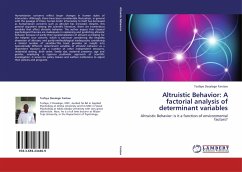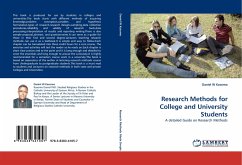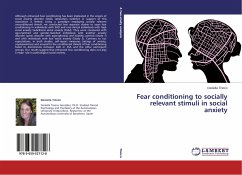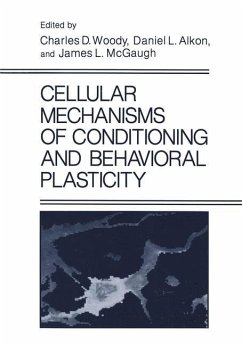
An Analysis of Sequential Variables in Pavlovian Conditioning
A Similar Ruleset Predicts both Pavlovian and Instrumental Conditioning Outcomes
Versandkostenfrei!
Versandfertig in 6-10 Tagen
32,99 €
inkl. MwSt.

PAYBACK Punkte
16 °P sammeln!
For many years, there has been a basic distinctionmade between Pavlovian and Instrumental Conditioning.While the two forms of conditioning are similar, abasic distinction made between them has been thepartial reinforcement effect (PREE), which seems toonly occur in instrumental conditioning. In fact, inMackintosh's seminal work "The Psychology of AnimalLearning" the PREE was used as a fundamentaldistinction between Pavlovian and Instrumentalconditioning. This set of experiments sought to applyCapaldi's sequential theory, where memories of priortrials help predict current trials, etc., to theso...
For many years, there has been a basic distinction
made between Pavlovian and Instrumental Conditioning.
While the two forms of conditioning are similar, a
basic distinction made between them has been the
partial reinforcement effect (PREE), which seems to
only occur in instrumental conditioning. In fact, in
Mackintosh's seminal work "The Psychology of Animal
Learning" the PREE was used as a fundamental
distinction between Pavlovian and Instrumental
conditioning. This set of experiments sought to apply
Capaldi's sequential theory, where memories of prior
trials help predict current trials, etc., to the
somewhat intractable problem of the Pavlovian PREE.
The question was whether sequential theory could
predict the Pavlovian PREE, its occurrence, strength,
etc. This was accomplished successfully. The results
imply that Pavlovian and Instrumental conditioning
may actually be the same form of conditioning as
revealed when analyzed utilizing sequential theory.
made between Pavlovian and Instrumental Conditioning.
While the two forms of conditioning are similar, a
basic distinction made between them has been the
partial reinforcement effect (PREE), which seems to
only occur in instrumental conditioning. In fact, in
Mackintosh's seminal work "The Psychology of Animal
Learning" the PREE was used as a fundamental
distinction between Pavlovian and Instrumental
conditioning. This set of experiments sought to apply
Capaldi's sequential theory, where memories of prior
trials help predict current trials, etc., to the
somewhat intractable problem of the Pavlovian PREE.
The question was whether sequential theory could
predict the Pavlovian PREE, its occurrence, strength,
etc. This was accomplished successfully. The results
imply that Pavlovian and Instrumental conditioning
may actually be the same form of conditioning as
revealed when analyzed utilizing sequential theory.












